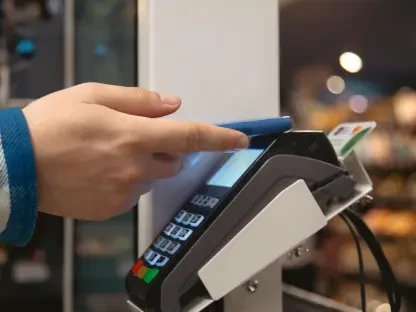In the sprawling landscape of B2B commerce, a staggering challenge persists: the fragmentation of transaction channels that slows down operations and inflates costs for enterprises worldwide. Billions of dollars are lost annually due to inefficiencies in manual processing across disparate platforms, from outdated EDI systems to modern e-commerce portals. This chaos creates a pressing need for a unified solution that can streamline workflows and drive scalability. Enter the Autonomous Execution Fabric, a groundbreaking technology introduced by Go Autonomous, designed to transform the way businesses handle transactions by integrating diverse systems into a single, intelligent execution layer.
Core Features and Innovations
Unifying Transaction Channels with AI
At the heart of this technology lies its ability to leverage enterprise AI to interpret and execute transactions from any source, be it email, legacy systems, or digital marketplaces. This intelligent orchestration layer acts as a bridge, converting disjointed processes into a seamless workflow that operates in real time. The result is a dramatic reduction in the time it takes to complete order-to-cash cycles, often shrinking them from days to mere minutes.
The significance of this capability cannot be overstated. By automating the contextualization of incoming orders, the system eliminates the need for manual intervention, which is often error-prone and time-consuming. Businesses can now process transactions with unprecedented speed, ensuring that revenue cycles are accelerated and operational bottlenecks are minimized.
Seamless Integration with Enterprise Systems
Another standout feature is the technology’s compatibility with a wide array of enterprise systems, including ERP and CRM platforms. This integration ensures that data flows effortlessly across an organization’s infrastructure, enabling real-time updates and decision-making. Whether dealing with older EDI frameworks or cutting-edge e-commerce solutions, the fabric adapts to varying technological environments without friction.
This adaptability addresses a critical pain point for many enterprises: the challenge of modernizing without abandoning legacy investments. By bridging the gap between old and new, the solution not only reduces implementation hurdles but also enhances scalability, allowing companies to expand operations without worrying about system incompatibilities.
Performance and Real-World Impact
Adoption by Industry Leaders
The practical value of this technology is evident in its adoption by major industrial players such as Grundfos, Danfoss, and VELUX. These companies have integrated the solution into their operations to optimize transaction processing and gain a competitive edge. For instance, by automating order handling across multiple channels, these enterprises have reported significant improvements in efficiency and cost savings.
Beyond individual success stories, the early embrace by such giants signals a broader shift in the industry. Their adoption serves as a testament to the fabric’s ability to address real-world challenges, paving the way for smaller firms to follow suit. This trend underscores the growing recognition of autonomous commerce as a vital component of modern business strategy.
Operational Benefits and Metrics
Delving into performance metrics, the technology delivers measurable outcomes that reshape enterprise operations. Error rates in transaction processing drop considerably due to the elimination of manual steps, while the speed of execution enhances customer satisfaction. The shortened order-to-cash timeline stands out as a key benefit, directly impacting cash flow and financial agility.
Moreover, the scalability offered by this solution allows businesses to handle increased transaction volumes without proportional increases in operational costs. This efficiency is particularly valuable in industries with fluctuating demand, where adaptability is crucial for maintaining profitability and market position.
Challenges in Implementation
Technical and Compatibility Hurdles
Despite its promise, deploying this technology across diverse enterprise environments is not without challenges. Compatibility with varied systems remains a technical obstacle, especially for organizations with deeply entrenched legacy setups that resist standardization. Ensuring smooth integration without disrupting existing workflows requires careful planning and customization.
Additionally, the complexity of training AI models to interpret unstructured data from multiple sources can pose difficulties. While the system excels in controlled environments, real-world variability in data formats and transaction types may occasionally lead to inefficiencies that need ongoing refinement.
Market Resistance and Adoption Barriers
Beyond technical issues, market resistance presents another hurdle. Some enterprises hesitate to adopt such transformative solutions due to concerns over cost, data security, or the perceived risk of overhauling established processes. This reluctance is often compounded by a lack of internal expertise to manage the transition effectively.
Efforts to address these barriers are underway, with Go Autonomous focusing on user-friendly interfaces and robust support systems to ease adoption. Tailored onboarding programs and partnerships with system integrators are also being prioritized to build trust and demonstrate tangible value to skeptical stakeholders.
Future Prospects and Industry Implications
Evolving Role in B2B Commerce
Looking ahead, the potential for this technology to redefine B2B commerce is immense. Over the next few years, from 2025 to 2027, advancements in AI and machine learning are expected to further enhance its capabilities, enabling even greater levels of autonomy in transaction processing. This evolution could position the fabric as a cornerstone of enterprise operations globally.
The long-term vision includes expanding its applicability beyond current use cases to encompass predictive analytics and proactive decision-making. Such developments would empower businesses to anticipate market shifts and customer needs, creating a more dynamic and responsive commerce ecosystem.
Broader Impact on Global Enterprises
As adoption grows, the ripple effects on global B2B transactions could be transformative. A unified execution layer promises to standardize processes across industries, reducing friction in international trade and fostering collaboration among disparate entities. This harmonization may also drive innovation in adjacent fields like supply chain management and financial technology.
The strategic importance of this shift is already evident in the support from investors and industry thought leaders who view autonomous commerce as a foundational element of modern manufacturing. Their backing suggests a future where integrated, intelligent systems become the norm rather than the exception.
Final Thoughts
Reflecting on the journey of the Autonomous Execution Fabric, its launch marked a pivotal moment in tackling the entrenched inefficiencies of B2B commerce. The technology’s ability to unify transaction channels and integrate seamlessly with enterprise systems stood out as a game-changer, offering tangible benefits to early adopters. Industry endorsements and measurable performance gains further validated its transformative potential.
Moving forward, enterprises should consider pilot programs to test the solution within their specific contexts, leveraging support from Go Autonomous to navigate implementation challenges. Collaboration with technology partners can also accelerate adoption, ensuring that integration hurdles are addressed efficiently. As the landscape of autonomous commerce continues to evolve, staying ahead of the curve by embracing such innovations will be key to maintaining a competitive advantage in a rapidly changing market.









